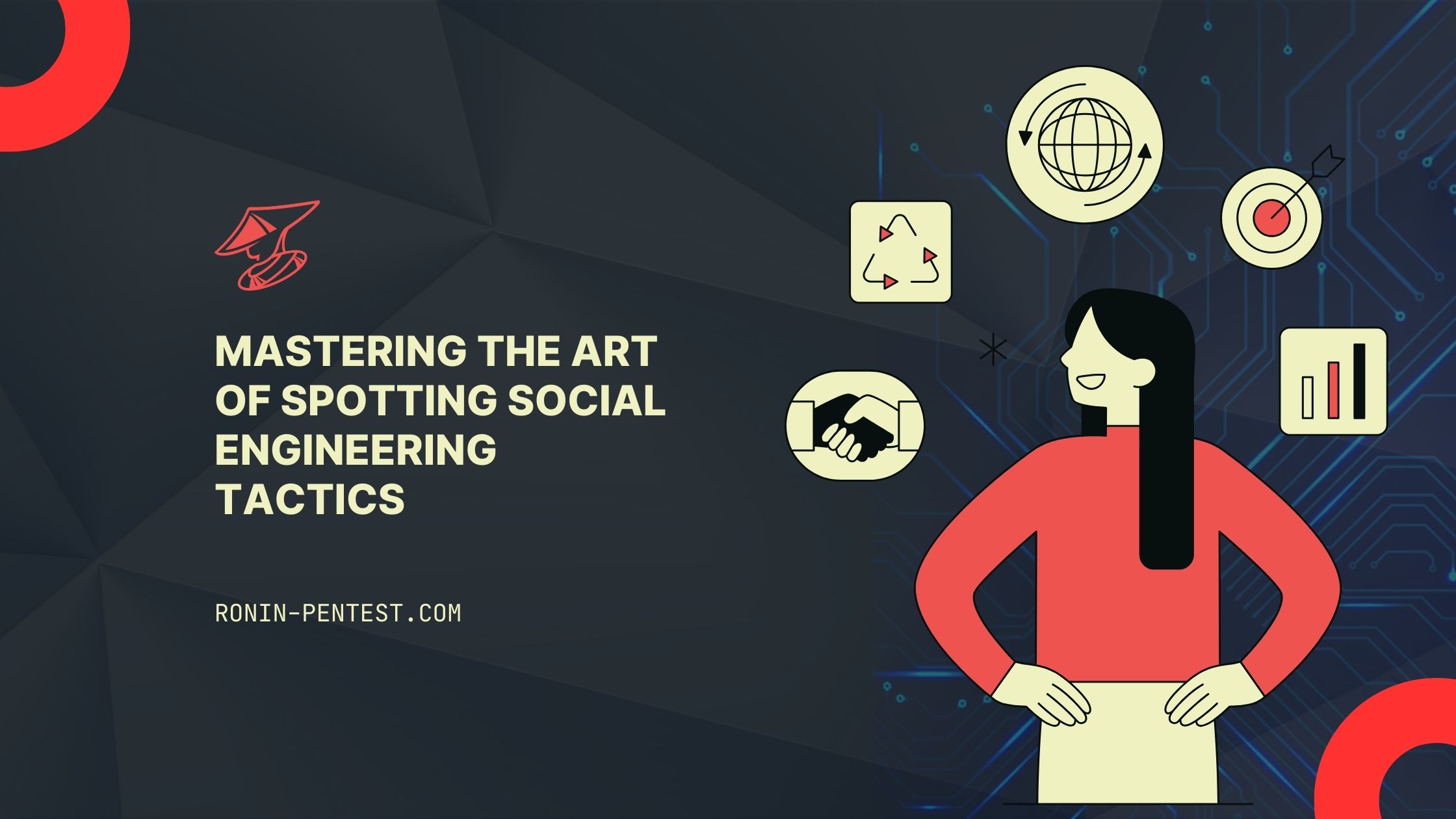Safeguarding Your Business: Mastering the Art of Spotting Social Engineering Tactics
by Ben Brown | 05/08/2024

by Ben Brown | 05/08/2024

In today's digital age, where information is as valuable as currency, protecting your company's secrets has never been more critical. Social engineering attacks have become a prevalent threat to corporate security, manipulating employees into giving away sensitive information. This blog post delves into the nuances of social engineering tactics, providing you with a deeper understanding and actionable strategies to fortify your company against these deceptive threats.
Social engineering is a form of manipulation that exploits human error to gain private information, access, or valuables. Unlike other cyber threats that rely on software vulnerabilities, social engineering attacks target the natural inclination to trust. Cybercriminals are adept at leveraging human emotions such as fear, urgency, or the desire to be helpful to infiltrate organisations and procure confidential data.
These tactics can come in many forms, from phishing emails and pretexting to baiting and tailgating. Each method has a common goal: to trick individuals into breaking standard security practices. By understanding these methods, your organisation can begin to weave a stronger fabric of security awareness and resilience.
The first step in defending against social engineering is to recognise its signs. These attacks often start with an unsolicited call, email, or message. The attacker will likely pose as a trusted figure—a bank employee, a member of the IT department, or even a vendor. They use sophisticated techniques to create scenarios that look and feel believable.
One clear indicator of a social engineering attempt is the urgency or secrecy surrounding the request. Attackers often tell a compelling story to create a sense of urgency, prompting the victim to act swiftly and without proper scrutiny. They may also invoke authority, claiming to be someone in power, to elicit fear and compliance.
Another red flag is the request for credentials or sensitive information that a legitimate entity typically would not ask for over the phone or via email. Be wary of any communication that asks for passwords, security questions, or access to secure areas.
Preventing social engineering attacks requires a blend of robust security policies, comprehensive employee training, and a culture of security awareness within the organisation.
Your company should establish and enforce strong security policies that include guidelines on how to handle and verify requests for sensitive information. Policies should require employees to use multiple methods of verification before accessing or sharing confidential information. It’s also crucial to have a clear protocol for reporting suspicious activity. When employees know what procedures to follow, they are more likely to handle unusual requests correctly.
Regular training sessions are essential to keep all employees aware of the latest social engineering tactics and preventive measures. These training sessions should include real-world scenarios and simulations that help employees practice how to respond to a suspected attack. The goal is to make security awareness second nature to your team members.
A culture of security goes beyond policies and training. It involves creating an environment where security is everyone's responsibility. Encourage employees to speak up about unusual requests and ensure they know that they will not face repercussions for questioning suspicious activities. Promoting open communication about security and recognising employees who identify threats can significantly strengthen your company’s defensive posture.
Ultimately, building resilience against social engineering is about reducing risk through education, preparedness, and informed vigilance. Regularly updating your security practices and policies as new threats emerge and maintaining an ongoing dialogue about the importance of security are critical components of resilience.
It’s also beneficial to conduct periodic security audits and penetration testing to identify and address vulnerabilities. These audits can reveal potential weaknesses in your security protocols and provide insights into how attackers could exploit your organisation’s systems.
Social engineering represents a significant and sophisticated threat to corporate security, but with the right knowledge and strategies, you can significantly mitigate its impact. By educating your employees and instilling a robust security culture, your organisation can defend against these deceptive tactics that target human vulnerabilities.
Remember, in the realm of cybersecurity, your employees' awareness and vigilance are just as crucial as the technological defenses in place. Stay informed, stay prepared, and maintain a proactive stance against the ever-evolving landscape of cyber threats.
Start scanning your projects for free. You will get a free breakdown of your security status. Start securing your future now.
Get started